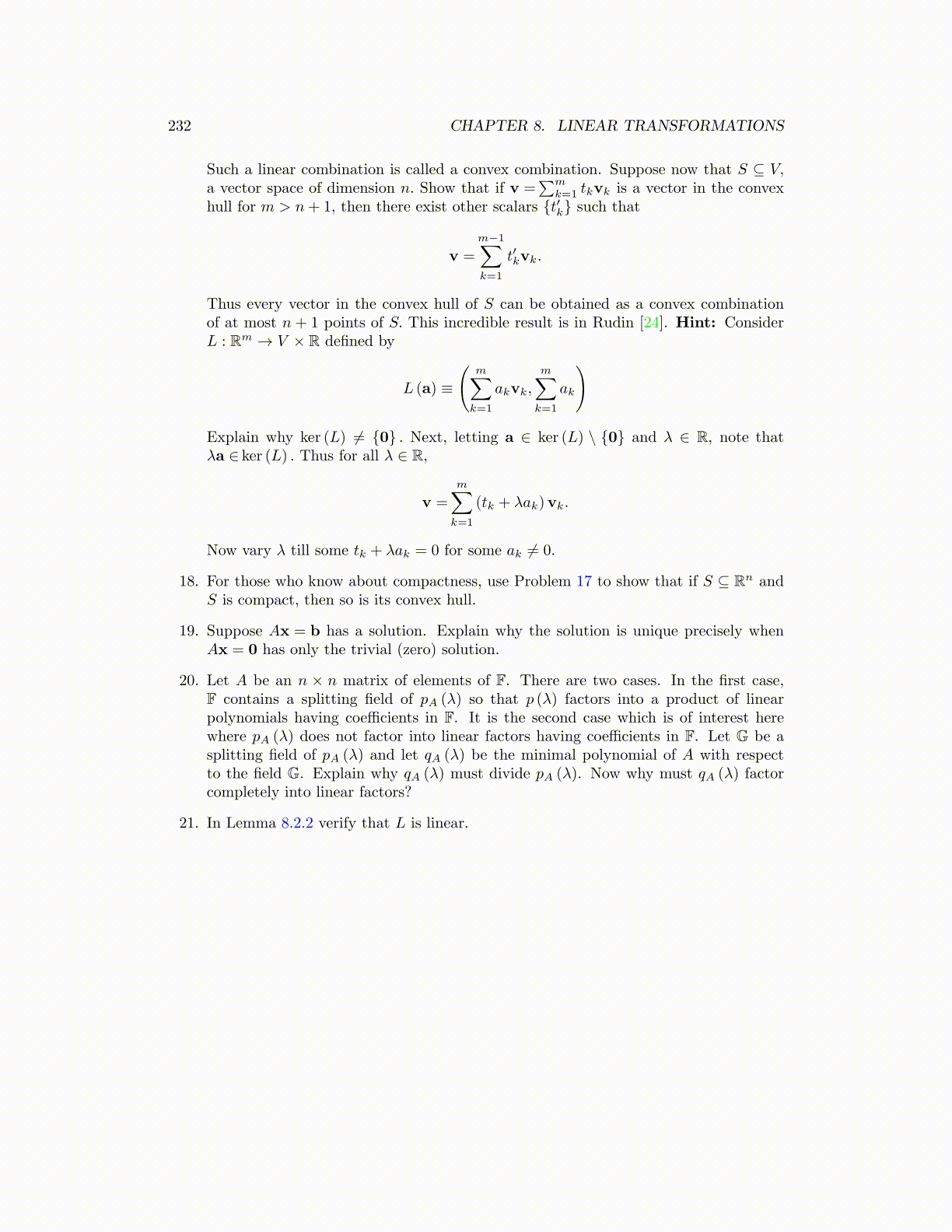
232 CHAPTER 8. LINEAR TRANSFORMATIONS
Such a linear combination is called a convex combination. Suppose now that S ⊆ V,a vector space of dimension n. Show that if v =
∑mk=1 tkvk is a vector in the convex
hull for m > n+ 1, then there exist other scalars {t′k} such that
v =
m−1∑k=1
t′kvk.
Thus every vector in the convex hull of S can be obtained as a convex combinationof at most n + 1 points of S. This incredible result is in Rudin [24]. Hint: ConsiderL : Rm → V × R defined by
L (a) ≡
(m∑
k=1
akvk,
m∑k=1
ak
)
Explain why ker (L) ̸= {0} . Next, letting a ∈ ker (L) \ {0} and λ ∈ R, note thatλa ∈ ker (L) . Thus for all λ ∈ R,
v =
m∑k=1
(tk + λak)vk.
Now vary λ till some tk + λak = 0 for some ak ̸= 0.
18. For those who know about compactness, use Problem 17 to show that if S ⊆ Rn andS is compact, then so is its convex hull.
19. Suppose Ax = b has a solution. Explain why the solution is unique precisely whenAx = 0 has only the trivial (zero) solution.
20. Let A be an n × n matrix of elements of F. There are two cases. In the first case,F contains a splitting field of pA (λ) so that p (λ) factors into a product of linearpolynomials having coefficients in F. It is the second case which is of interest herewhere pA (λ) does not factor into linear factors having coefficients in F. Let G be asplitting field of pA (λ) and let qA (λ) be the minimal polynomial of A with respectto the field G. Explain why qA (λ) must divide pA (λ). Now why must qA (λ) factorcompletely into linear factors?
21. In Lemma 8.2.2 verify that L is linear.